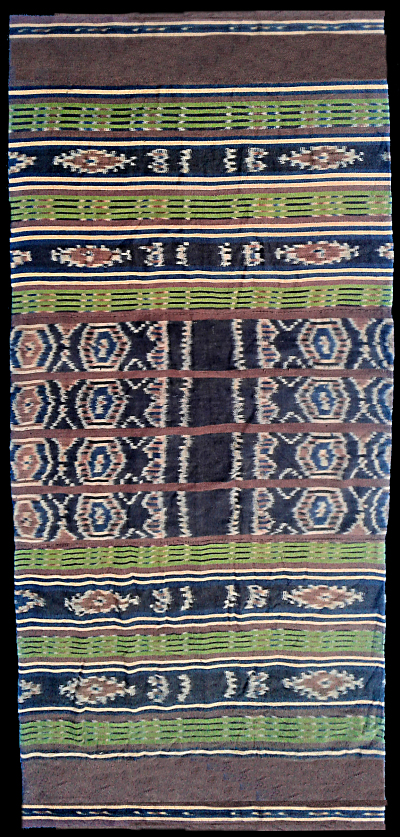| |
339 Solor Archipelago, Pantar
Kafate (sarong)
|
| Locale: | Bakalang village, N.E. Pantar, Alurung (Alorese speaking) people. Possibly made on Ternate to Pantarese specification, though evidence of local manufacture is getting stronger. |
| Period: | |
| Yarn: | Cotton, hand-spun, medium, and silk pinstripes |
| Technique: | Weft ikat |
| Panels: | 3 |
| Design: | This type of cloth is called kafate sutera, sutera meaning 'silk'. The midfield is an obvious patola-emulation, probably a patola with the chabadi bhat motif. The cloth was woven by Mama Isya Kawaka in the 1930s and passed on to her daughter, Inang Tobitau, who sold it in 2020. According to Linda S. McIntosh, an expert on the ikat of this area, the banded structure is typical for East Pantar. |
| Comment: | [PHOTOGRAPHY PROVISIONAL] All dyes (except those of the commercial silk) are natural, including the green - a very rare, apparently stable green dye. Most green dyes used in the Indonesian archipelago are unstable and typically lose most of their colour within two or three decades. This green is still lively and strong. For more background on its composition see detailed information page |
| Background: | Chapters on Solor Archipelago and Pantar. |
| Sources: | Informatioin on dyes and provenance provided by Marthen Mabilehi. |
| |

©Peter ten Hoopen, 2024
All rights reserved.
|


